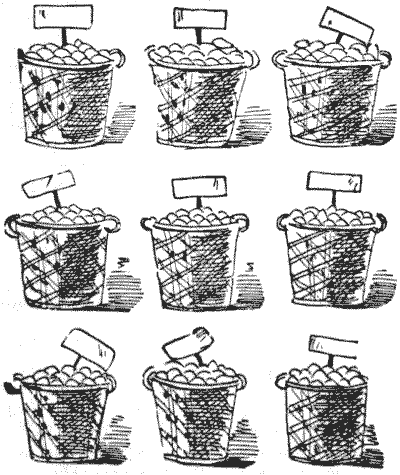This is the form in which I first introduced the question of magic squares with prime numbers. I will here warn the reader that there is a little trap.
A fruit merchant had nine baskets. Every basket contained plums (all sound and ripe), and the number in every basket was different. When placed as shown in the illustration they formed a magic square, so that if he took any three baskets in a line in the eight possible directions there would always be the same number of plums. This part of the puzzle is easy enough to understand. But what follows seems, at first sight, a little queer.

The merchant told one of his men to distribute the contents of any basket he chose among some children, giving plums to every child so that each should receive an equal number. But the man found it quite impossible, no matter which basket he selected and no matter how many children he included in the treat. Show, by giving contents of the nine baskets, how this could come about.
Solutions: 1
This eBook is for the use of anyone anywhere in the United States and most other parts of the world at no cost and with almost no restrictions whatsoever. You may copy it, give it away or re-use it under the terms of the Project Gutenberg License included with this edition or online at http://www.gutenberg.org. If you are not located in the United States, you'll have to check the laws of the country where you are located before using this ebook.